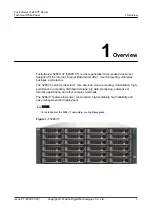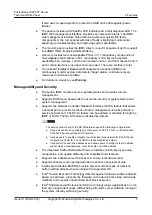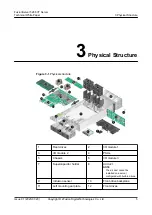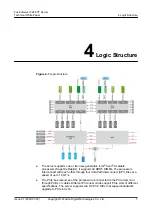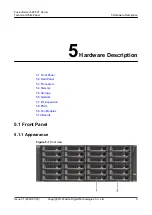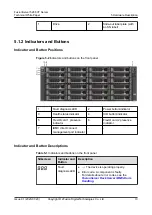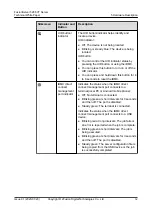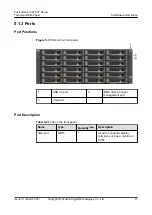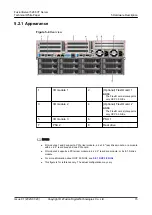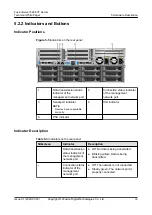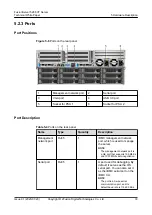
It also uses a supercapacitor to protect the RAID cache data against power
failures.
●
The panel provides a UID/Healthy LED indicator and a fault diagnosis LED. The
iBMC Web management interface provides key component status. The iBMC
web management interface helps technical personnel quickly find faulty
components or the components with risk of faults, simplifying maintenance,
speeding up troubleshooting, and improving system availability.
●
The mounting ear provides the iBMC direct connect management port to support
local iBMC O&M, improving O&M efficiency.
●
A server provides two hot-swappable PSUs in 1+1 redundancy mode and four
hot-swappable fan modules in N+1 redundancy mode, improving system
availability. Fan modules 1 and 4 each contain one fan, and fan modules 2 and 3
each contain two fans (one upper and one lower). There are six fans in total.
●
The onboard Intelligent Baseboard Management Controller (iBMC) can
continuously monitor system parameters, trigger alarms, and take recovery
measures to minimize shutdown.
●
For details on warranty, see
Manageability and Security
●
The built-in iBMC monitors server operating status and provides remote
management.
●
Supports BIOS menu passwords to ensure the security of system startup and
system management.
●
Supports the Network Controller Sideband Interface (NC-SI) feature that allows
a network port to provide functions of both a management network port and a
service network port. The NC-SI feature can be enabled or disabled through the
iBMC or BIOS. The NC-SI feature is disabled by default.
NO TE
The service network port of the NC-SI feature supports the following configurations:
● It can be bound to any network port of the server's OCP 3.0 NIC or other standard
PCIe NICs that support the NC-SI function.
● It allows users to enable or disable the virtual local area network ID (VLAN ID) and
configure the VLAN ID. The VLAN ID is
0
and disabled by default.
● It supports IPv4 and IPv6 addresses, and allows users to configure the IP address,
subnet mask, default gateway, or prefix length of an IPv6 address.
●
The integrated Unified Extensible Firmware Interface (UEFI) improves setup,
configuration, and update efficiency and simplifies fault clearance.
●
Supports the lockable server front bezel to ensure local data security.
●
Supports chassis cover opening detection to enhance physical security.
●
Intel Execute Disable Bit (EDB) function prevents certain types of malicious
buffer overflow attacks when working with a supported OS.
●
Intel
®
Trusted Execution Technology defends against malicious software attacks
based on hardware, prevents the firmware on the device from being maliciously
modified, and prevents unauthorized boot block execution.
●
Intel
®
Software Guard Extensions (SGX) technology allows applications to run in
their own independent space without being affected by other software running in
the system, thereby enhancing security.
FusionServer 5288 V7 Server
Technical White Paper
2 Features
Issue 01 (2023-07-20)
Copyright © xFusion Digital Technologies Co., Ltd.
3








